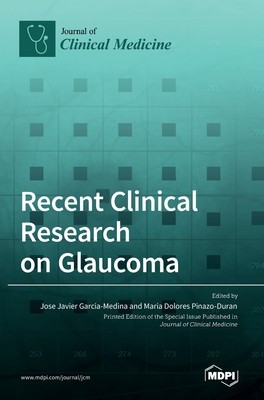
- We will send in 10–14 business days.
- Publisher: MDPI AG
- ISBN-10: 3036538356
- ISBN-13: 9783036538358
- Format: 17 x 24.4 x 2.1 cm, hardcover
- Language: English
- SAVE -10% with code: EXTRA
Recent Clinical Research on Glaucoma (e-book) (used book) | bookbook.eu
Reviews
Description
In the past few years, knowledge about glaucoma diagnosis and follow up has evolved dramatically through advances in intraocular pressure (IOP) measurement, corneal biomechanics, structural and functional assessment of the ocular surface, anterior chamber, retina, optic nerve and intracranial visual pathways, as well as the advent of artificial intelligence. In addition, the development of new modalities of IOP-lowering and non-IOP-lowering drugs, alternative deliveries, refined laser technologies, and minimally invasive glaucoma surgery (MIGS) techniques with different implants have widened the therapeutic possibilities for treating this disease. Finally, current insights into risk factors and quality of life in relation to glaucomatous impairment are emerging. The purpose of this Special Issue is to present the latest exciting clinical developments that are taking place in the field of glaucoma.
EXTRA 10 % discount with code: EXTRA
The promotion ends in 10d.07:32:16
The discount code is valid when purchasing from 10 €. Discounts do not stack.
- Publisher: MDPI AG
- ISBN-10: 3036538356
- ISBN-13: 9783036538358
- Format: 17 x 24.4 x 2.1 cm, hardcover
- Language: English English
In the past few years, knowledge about glaucoma diagnosis and follow up has evolved dramatically through advances in intraocular pressure (IOP) measurement, corneal biomechanics, structural and functional assessment of the ocular surface, anterior chamber, retina, optic nerve and intracranial visual pathways, as well as the advent of artificial intelligence. In addition, the development of new modalities of IOP-lowering and non-IOP-lowering drugs, alternative deliveries, refined laser technologies, and minimally invasive glaucoma surgery (MIGS) techniques with different implants have widened the therapeutic possibilities for treating this disease. Finally, current insights into risk factors and quality of life in relation to glaucomatous impairment are emerging. The purpose of this Special Issue is to present the latest exciting clinical developments that are taking place in the field of glaucoma.


Reviews